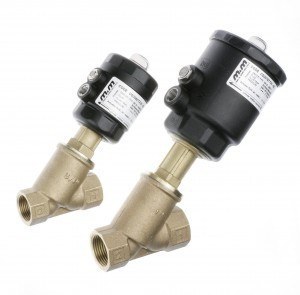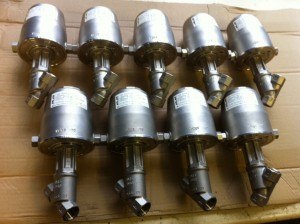- May
12
2016 - 0
10 Reasons to use a pneumatic piston valve
10 Reasons to use a pneumatic piston valve
The pneumatic piston valve, or angled seat piston valve is a simple device that has become an industry standard valve type for controlling steam and water, why is it so popular and what makes it the valve of choice for high temperature applications and what other applications can the valve be used in?

1) Â Saturated steam applications quite often reach pressures close to 200 degrees Centigrade. Â At this temperature many seals will become affected and eventually fail. Â A pneumatic piston valve will generally use PTFE or in some cases RPTFE main seals to form a positive seal on its seat. Â PTFE and RPTFE have been proven to handle high temperatures and provide a good seal. Â It is also common for steam to contain abrasive particles which could score a seal in a rotary valve eventually causing leakage, a valve providing a linear motion will avoid this risk. Â Bodies made from bronze (gun metal) and stainless steel are also very durable and ideal for this type of heavy duty application.
2) A pneumatic piston valve is fast acting compared to many other types of pneumatic valve. Â This is mainly due to the efficiency of its short linear action which require very little force to operate, hence its compact pneumatic cylinder (or actuator). Â Most piston valves can operate in less than 1 second.
3) Some model of piston valve are bi-directional.  If used in reversed flow (from port 2 to port 1) heat and pressure can be under the seat which protects the stem seals and reduces heat dissipation into the actuator.  Another advantage of using the valve in reverse flow is to eliminate water-hammer which can be caused by fast acting valves in higher pressure water systems.
4) Â A pneumatic piston valve is often a very good choice of valve to use with vacuum systems, some standard valves are suitable but often slightly modified versions are required. Â A ball valve will often draw in air as the vacuum pulls the stem seals down, a piston valve does not suffer from this.
5) Â Compared to an equivalent sized actuated ball valve the piston valve is much more of a compact design enabling installation into tighter spaces. Â In most cases the actuator can be rotated by 360 degrees so that the air connection port can be conveniently located.
6) The actuator of a piston valve can contain a spring to provide either normally closed or normally open operation. Â If the spring is not used then the valve will give a double acting operation
7) Piston valves are supplied with a wide range of port connections, from threaded, socket and butt weld, RJT and clamp and flanged.
8) Â Most manufacturers will offer a range of options such as electrical feedback, manual override, stroke regulator, sometimes these are available as a retrofit.
9) Apart from the small weir effect across the seat, the flow rate of a piston valve is very high. When operated the main piston is lifted out of the flow path and most piston valve offer almost full flow when in the open position.
10) Â When fitted with a positioner module the piston valve makes for an excellent modulating valve due to its fast linear operation. Â It is simple to tailor the modulating valve to suit its specific application providing linear or exponential flow characteristics from a 4-20mA or 0-10v control signal.
If you wish to learn more about pneumatic piston valves please contact us for further information or speak to one of our engineers.


